 The Partnership Initiative for Sustainable Land Management (PISLM) has invested US$1.6 million into a sustainable land management project at the University of the West Indies (UWI), St. Augustine. This initiative was formalised on Monday through the signing of a memorandum of understanding (MOU) for the use of 25 acres at UWI's Orange Grove lands. Prof Mark Wuddivira, dean of the Faculty of Food and Agriculture, said the partnership aims to establish an integrated land-management model integrating agriculture, forestry and natural-resource management practices. "This collaboration is set to provide developmental, environmental and food-security benefits across the Caribbean, particularly in territories such as Antigua and Barbuda, Barbados, Belize, Grenada, Guyana, Jamaica, Haiti and St Lucia." Wuddivira said the slow pace of innovation and the limited development of environmentally sound climate-resilient technologies is no foreign concept. He said addressing these gaps would require the design and implementation of climate-resilient food-production systems and regional training exercises. "The development and implementation of climate-resilient technologies are critical as climate-change impacts intensify. “Training farmers in these technologies will enhance food-production systems and regional capacity." PISLM executive director Calvin James underscored the organisation's commitment to aiding Caribbean countries in meeting their obligations under the UN Convention to Combat Land Degradation (UNCCD). "PISLM's primary project, Soil Care, focuses on updating outdated soil maps and analysing soil carbon content across the Caribbean." With the project now expanding into phase two, PISLM is set to roll out a $18 million initiative across 14 countries. James highlighted the importance of the agreement, which provides PISLM access to the 25-acre site at Orange Grove for testing sustainable technologies. "This partnership enables us to research and identify resilient agricultural technologies, transforming degraded areas and enhancing regional sustainability. “This collaboration allows us to go into what we call hot spots and test land-regulation technologies to see if they have the capacity to transform degraded areas." The initiative aims to contribute to the Caribbean's goal of reducing its food import bill by 25 per cent by 2025. (Source: Newsday, June 19, 2024) An eyewitness account of the 1937 Labour Riots in Trinidad.
I remember it like it was yesterday. The air was thick with the smell of burning petrol, the cries of anger, and the promise of change. I was twenty-five years old, a young man working the oil fields in Fyzabad. The discontent that had been simmering for years finally erupted into the madness of 1937. The oil fields were our lifeblood and our chains. For generations, men like me toiled under the relentless sun, drilling for black gold that enriched foreign hands while we lived in squalor. Our lives were a cycle of labour and poverty, with no end in sight. The colonial masters and local overseers held all the power, and we had none. But something was changing. The whispers of discontent grew louder, and the spark was lit by one man—Tubal Uriah "Buzz" Butler. Butler was a man of fire and brimstone, his speeches ignited the hope that had long been dormant in our hearts. He spoke of justice, of fair wages, of a future where our children would not be bound by the same chains. On June 19th, a gathering was called in Fyzabad. Hundreds of us, workers from all over Trinidad, assembled to hear Butler speak. The air was electric with anticipation. As Butler's voice rang out, calling for a strike, a unified cry of agreement rose from the crowd. It was the first time I felt the true power of solidarity. But the colonial authorities were not blind to our gathering storm. They saw Butler as a threat, a trigger that could ignite a full-blown rebellion. As we marched through the streets, demanding our rights, the police confronted us, their guns and batons raised. The clash was inevitable. I remember the chaos, the sounds of struggle, and the first shot fired. It was like a dam had burst. I saw friends fall, blood staining the earth, but I also saw courage. Men and women who had been beaten down for so long stood tall and fought back. We were no longer silent; our voices rose in unison against the oppression. In the midst of the riot, I found myself alongside Elma Francois, a woman whose passion for justice matched Butler's. Her presence was a beacon, her words a rallying cry. "We fight for our future!" she shouted, her voice cutting through the noise. Inspired, I fought harder, my anger transforming into a determined force. The days that followed were a blur of strikes, protests, and clashes with the authorities. The news of our struggle spread like wildfire across Trinidad, and soon, the entire island was gripped by the spirit of resistance. The colonial government, faced with unprecedented unrest, had no choice but to negotiate. It wasn't an easy victory, and it didn't come without a cost. Lives were lost, and even more were injured. Butler and Francois faced imprisonment, but their sacrifice was not in vain. The riots led to significant changes in labour laws and the formation of trade unions, giving workers like me a voice we had long been denied. Now, as I look back on that time period, I feel a mix of pride and sorrow. Pride for what we achieved, and sorrow for those who didn't live to see the fruits of our struggle. Labour Day in Trinidad is more than a public holiday; it's a reminder of our resilience, our unity, and the enduring spirit of the people. Every year, when June 19th comes around, I tell my grandchildren the story of the Labour Riots. I want them to know that the rights we enjoy today were not given, but earned through sweat, blood, and unwavering determination. The flame of 1937 still burns within me, and it is my sincere hope that it kindles one within you. An excerpt from the personal collection of Joseph Crawford (1987) (Source: Sanfernando Community North Library, June 19, 2024)
Ingredients: - Ripe mangoes, peeled and diced - Coconut milk (full-fat) - Granulated sugar (adjust to taste) - Lime juice (optional, for a hint of acidity) - Shredded coconut (optional, for added texture) Instructions: 1. Place the diced mangoes in a blender or food processor and puree until smooth. 2. In a mixing bowl, combine the mango puree with coconut milk and granulated sugar. Adjust the amount of sugar to your desired level of sweetness. 3. If using, add a squeeze of lime juice to enhance the mango flavor and add a hint of acidity. 4. For added texture, stir in shredded coconut into the mixture. 5. Pour the mixture into an ice cream maker and churn according to the manufacturer's instructions until it reaches a creamy consistency. 6. Once churned, transfer the ice cream to a freezer-safe container and freeze for at least 4 hours, or until firm. 7. When ready to serve, allow the coconut mango ice cream to sit at room temperature for a few minutes to soften slightly before scooping. 8. Scoop the ice cream into bowls or cones and garnish with additional shredded coconut or slices of fresh mango, if desired. 9. Enjoy the tropical flavors of Coconut Mango Ice Cream and savor the taste of summer! One of the best known names in Caribbean literature, Sam Selvon, was born on May 20th in 1923!
As an author, Selvon is celebrated for his vivid depictions of Caribbean life and stories of West Indian migration. Many of his later writings drew from his experiences as a member of the Windrush generation of Caribbean immigrants to Britain in the 1950s. His book, “The Lonely Londoners” (1956) is still recognized as one of the first novels to incorporate Caribbean dialects in its telling of working-class migrant life in the UK. Over the years, Selvon authored a number of books, including “Ways of Sunlight” (1957), “Those Who Eat the Cascadura” (1972) and “Moses Ascending” (1975). In 1976, he co-wrote the screenplay for British film “Pressure” with Horace Ové, celebrated as the UK's first Black dramatic feature-length film. He was a two-time winner of the prestigious Guggenheim Fellowship, a recipient of the Hummingbird Medal (Gold, 1969) and the Chaconia Medal (posthumously, 1994). In the 1980s, Selvon was honoured with degrees from the University of the West Indies (1985) and Warwick University (1989). Born in San Fernando, Selvon attended Naparima College before serving 5 years in the West Indian Royal Navy (R.N.V.R) during WWII, on ships in the Caribbean. After the War, Selvon worked as a reporter at the Trinidad Guardian Newspaper (1945-1950). He also wrote stories under pseudonyms and had some of his work broadcast by the BBC. Encouraged by this success, he migrated to the UK in 1950 with the manuscript of his first book “A Brighter Sun” (1952). In London, Selvon worked several jobs, while his short stories were published by various British magazines. He also produced two television scripts for the BBC: “Anansi the Spider Man” and “Home Sweet India.” Selvon later moved to Canada, where he became a fellow at the University of Dundee, and a professor in creative writing at the University of Victoria. He passed away on April 16th 1994 in Trinidad. In 2018, on what would have been his 95th birthday, Selvon was honoured by Google with a “Google Doodle”. This photo is courtesy of the Sunday Guardian newspaper, May 5th 1963, and is part of the National Archives of Trinidad and Tobago Newspaper Collection. (Source: National Archives of T&T, May 20, 2024) Trinidadian student Nathaniel West obtained top honours at the prestigious university for Aeronautical Science in Florida- Embry-Riddle Aeronautical University (ERAU). Trinidadian student Nathaniel West - a past student of St. Stephen’s College and Presentation College, San Fernando - obtained top honours at the prestigious university for Aeronautical Science in Florida- Embry-Riddle Aeronautical University (ERAU).
Nathaniel obtained First Class Honours (Summa Cum Laude) in Aeronautical Science and Airline Operations, completing the four-year degree in three years. As the top graduate in his faculty and most outstanding flight student, Nathaniel received special monetary awards along with his certificate - Flight Department Chairman’s Award and Most Outstanding Student in the Faculty of Aeronautical Science. During his programme of study, he also completed a training course as a Certified Flight Instructor II, and was hired by the university as an instructor during his last year of study. Nathaniel was also involved with the Alpha Omicron Alpha (AOA) Aeronautical Honour Society as Safety Chair and was instrumental in reviving the Aviation Safety Advisory Council (ASAC), serving as President. It’s obvious this is a young man reaching for the skies in his chosen profession. Nathaniel followed in his father’s footsteps to achieve First Class Honours in his field of study. His father, Derek West, achieved a First-Class Honours degree in Mathematics from the University of the West Indies, and as the first principal of Trinity College East, he guided the students to achieve many successes during his tenure. Nathaniel’s mother, Nicole, is a proud public servant in the Forestry Division of the Ministry of Agriculture. He is the first of two boys of his parents and is adored by his younger brother, Nicolas. Prior to heading to university, Nathaniel was the winner of multiple Music Festival Awards, including a 12–15-year Pan Solo Championship, and was Vice Captain of Golden Hands Steelband when they won the Small Band Panorama title in 2019. (Source: The Loop, May 17, 2024) AND THEY BROUGHT WITH THEM THEIR TRADITIONAL ART OF JEWELLRY MAKING FROM THEIR MOTHER COUNTRY6/10/2024 Indian Sonars ( Jewelers) were well known in Trinidad during and after the indentureship period. Sonar or Sunar (also spelled Suniar) is from the Sanskrit suvarnakar, meaning worker in gold. The Sonars were master gold and silversmiths craftsmen. They designed and made jewellery that were elaborately designed and inlaid with precious and semi-precious stones.
They brought their traditional gift of the art of making delicate filigree jewellery designs from their mother country of India. The East Indian Sonars went into the villages and sugar estates transacting business among the plantation workers and would use humble abode at seen in one of the attached vintage photos to set up their shop and display their items of jewellery. Jewellery produced by these master craftsmen during this period included the Khanpul (earrings), nakphul ( nose – rings) , chanahar ( necklace) ,churi ( bracelets) and bera. For the East Indian women wearing of gold and silver jewellery was not only part of their ancestral tradition but it helped the East Indian women who traditionally had no say in things, to have financial security. (Source: Virtual Museum of T&T, May 20, 2024) Trinidadian architect-poet Fawzia Muradali Kane has been named as the second prize winner in Britain’s National Poetry Competition for her poem Eric.
The poem was selected from 19,000 poems from 8,841 poets in 110 countries, which were judged anonymously by the poets Jane Draycott, Will Harris and Clare Pollard. Born in San Fernando, Kane went to the UK on a scholarship to study architecture. She practised as an architect in Trinidad for some years, and now lives in London. Along with Mike Kane she is co-director of KMK Architects. Most of Kane’s early poetry is in the form of dramatic monologues, mainly in the voice “Tantie Diablesse”, a 300-year-old folklore character who was an enslaved woman from T&T. “Tantie Diablesse” (Waterloo Press, 2011) is also the name of her first collection, which was a finalist in the poetry section for the 2012 Bocas Lit Fest prize. Kane’s poetry has been published in journals including Agenda, Brittle Star, Poetry Review, Poetry London, Poetry Wales, and Rialto. A selection of her poems was published in MPT Profound Pyromania, which focuses on Caribbean poetry. An illustrated long sequence of poems Houses of the Dead was published as a pamphlet by Thamesis Publications in 2014. More: https://poetrysociety.org.uk/poems/eric/ (Source: Dominic Kalipersad, May 20, 2024) Mango lime pie 3½ ozs ginger snaps 2 tbs melted butter ½ cup lime juice 1 cup condensed milk ½ cup mango puree 4 egg yolks 1 tsp lime zest Preheat oven to 325F. In a food processor process gingersnaps to fine crumbs, add melted butter and process. Press mixture into the bottom of a 9-inch pie plate. Bake for 5 minutes until set. Preheat oven to 350F. With an electric mixer, beat yolks until light and fluffy. Add condensed milk, lime zest and mix on low speed until combined. Add lime juice and mango puree, and mix well. Pour mixture into pre-baked cookie shell and bake for 20-30 minutes until the centre of the pie is firm and dry to the touch. Chill thoroughly until ready for use. Option: serve with whipped cream if desired. Serves 6-8 Mango passion fruit sorbet with lemongrass 5 cups water 3 cup sugar 1 stalk fresh lemon grass bruised and cut into 2-inch pieces 2 cups mango pulp (about 8 Julie mangoes) 1 cup passion fruit pulp( about 6 passion fruit) ¼ cup fresh lime juice Boil water and sugar with lemongrass until sugar is dissolved. Cool and strain. Stir in lime juice, mango and passion fruit pulp. Chill well. Pour into an ice cream freezer and process according to manufacturer’s directions. Makes about 6 cups To make passion-fruit pulp, slice fruit into half, scoop out pulp covered seeds, put in a blender jar and process until liquefied. Add a very small amount of water if needed, do not strain. Serves 8-10 It's mango season and as more and more mangoes appear at the grocery stores, here are two recipes. Unfortunately Julie mangoes are hard to come by, so use the yellow Atulfo mangoes. These recipes were published by Newsday on June 1, 2024. Enjoy. Caramelised mango upside-down cake - Cake: ⅓ cup butter ½ cup granulated sugar 2 large eggs 1½ cups all-purpose flour, sifted 2½ tsp baking powder 1 tsp cardamom ½ cup orange juice 1tsp vanilla For the mangoes 1 lb mango flesh, preferably Julie, just ripe, sliced ½ cup granulated sugar ⅛ cup water Juice of two small limes Preheat oven to 350F. Grease one 9-inch round spring-form cake pan, and line the bottom with parchment paper. Place mangoes in a concentric circle at the base of the pan. Squeeze lime over mangoes. Cream ⅓ cup butter with granulated sugar until light and fluffy, and add eggs one at a time, beating well between additions. Sift flour with baking powder and cardamom. Add to butter mixture alternately with juice and vanilla, making sure your last addition is with flour. Place sugar in a small saucepan, add water and cook until sugar becomes an amber colour. Pour over mangoes. Spoon on cake batter and bake for 35 minutes. Remove, and invert onto serving plate, Serve warm. Serves 8 Mango mousse 1 tbs gelatine ¼ cup rum 2 cups whipping cream ½ tsp lime zest 1 cup mango pulp Heat rum gently remove from heat and dissolve gelatine into rum, set aside and cool. Puree mango in a food pro and add to gelatine mixture with lime zest. Stir well and refrigerate to cool. Beat whipping cream to stiff peaks and gently fold into mango puree. Pipe into stemmed glasses, cover and refrigerate until ready for serving. Garnish with sprigs of fresh mint and chopped fresh mango.  that Trinidad & Tobago is the third largest Leatherback turtle nesting site in the world? Approximately 10,000 turtles visit our shores every year to lay their eggs! Our country is home to many species of endangered and critically endangered turtles, such as the Hawksbill sea turtle, the Green sea turtle, and the Leatherback sea turtle. After about two months in their nest, Leatherback hatchlings emerge from the sands and make their way to the ocean. Matura, Las Cuevas, Fishing Pond, and Grande Rivière are some of our most popular beaches where people can gather to observe this amazing phenomenon. During nesting season, these beaches are protected and permission is required from qualified tour guides to view the turtles. This season lasts for six months, until August 31st. This beautiful photo by Trinbagonian photographer Maria Nunes shows a leatherback turtle on the Grande Riviere Beach, at the North Coast of Trinidad. It is courtesy of the magazine, “Ins & Outs of Trinidad & Tobago 2016”, which is part of the National Archives of Trinidad & Tobago Magazine Collection. At the National Archives, we believe that magazines are valuable archival documents that show how dates of agricultural, civil, religious, or social significance can change over time. (Source: National Archives of T&T, May 23, 2024) |
T&T news blogThe intent of this blog is to bring some news from home and other fun items. If you enjoy what you read, please leave us a comment.. Archives
May 2025
Categories
All
|



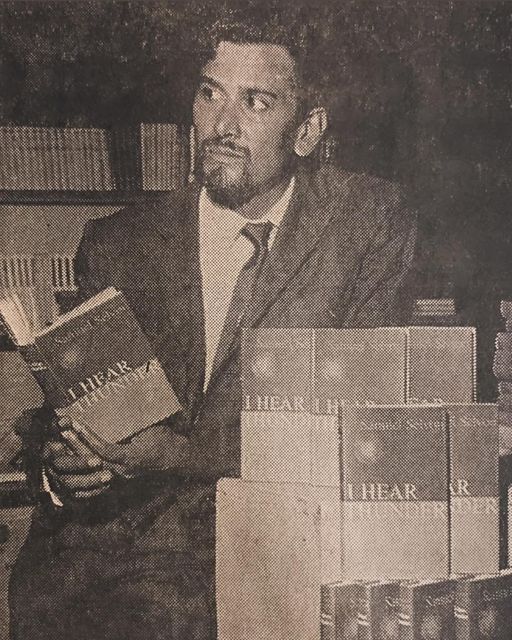

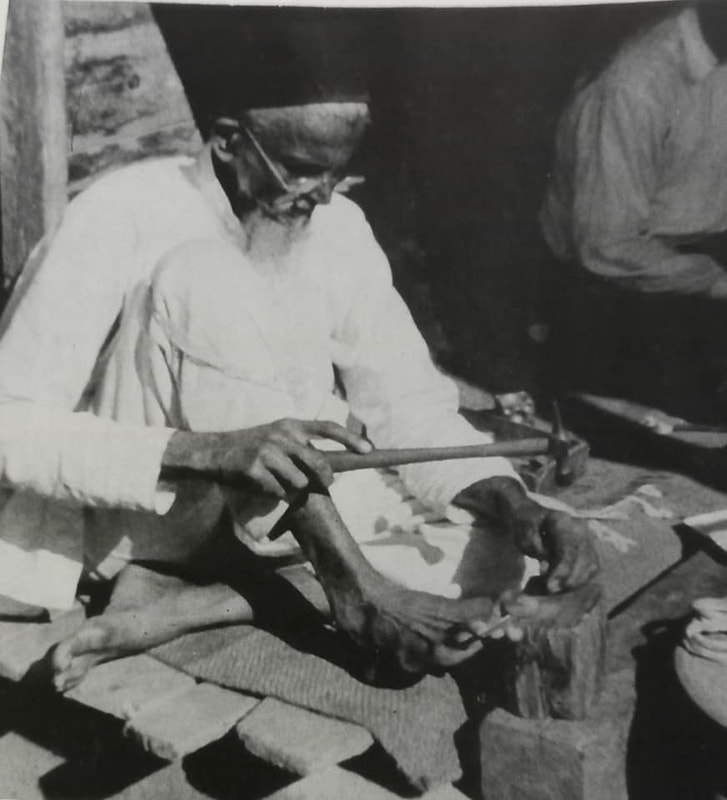
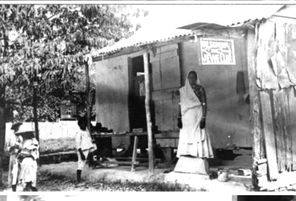
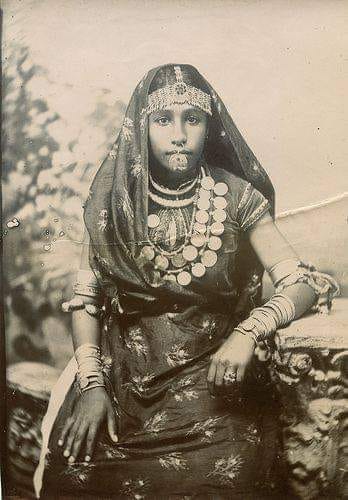
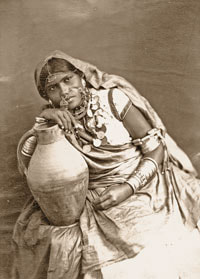
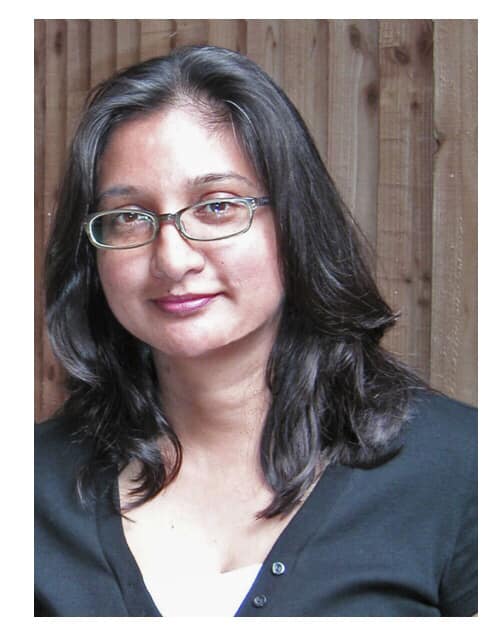

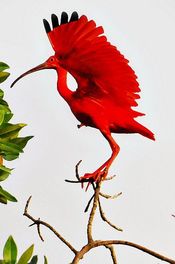
 RSS Feed
RSS Feed